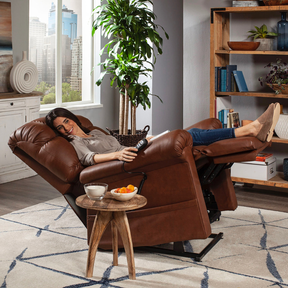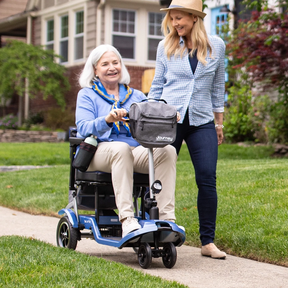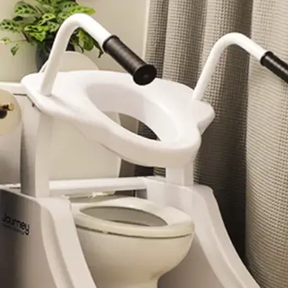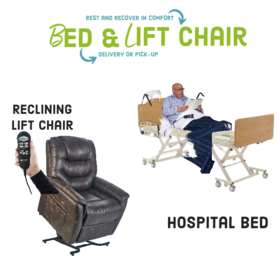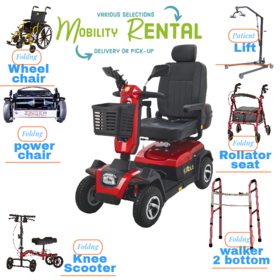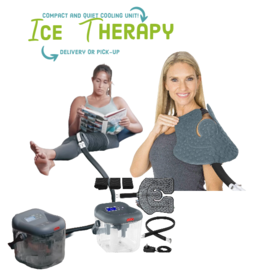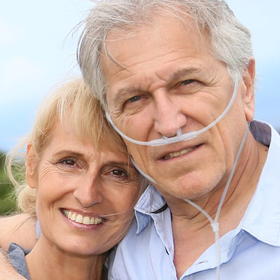Blog What you need to know All About Portable Oxygen Concentrator
Fri, 10/14/2022 - 14:10

You can do certain things to simplify your ability to deal with challenges while battling a lung disease or a respiratory disorder that necessitates using supplemental oxygen. Oxygen has several advantages and with the option of a portable oxygen concentrator, you may now breathe easier while taking advantage of your independence and liberty.
 Some people experience respiratory issues because of things like:
Some people experience respiratory issues because of things like:
- COPD
- Lung cancer
- Asthma
- a flu
- COVID-19
An oxygen concentrator is a medical gadget that provides you with more oxygen. If your medical condition makes your oxygen level fall too low, your doctor might recommend one.
What are Portable Oxygen Concentrators?
POC stands for portable oxygen concentrator, medical equipment that aids people with low blood oxygen levels. Either a battery or an electrical outlet can be used to power them. If the battery is depleted, you'll need to plug it into an outlet to recharge it. For usage while driving, many portable oxygen concentrators also include an adaptor.
Air is taken in, cleaned, and distributed using an oxygen concentrator. Air comprises 80% nitrogen and 20% oxygen before entering the concentrator. When the air is sent through an oxygen concentrator, it is converted to 90 to 95 percent pure oxygen and 5 to 10 percent nitrogen. Since obtaining that amount of oxygen without medical equipment is challenging, the nitrogen is segregated to give the patient the greatest dose of oxygen possible.
How Does POC Work?
A portable oxygen concentrator is made up of many different components. The major features include a sieve bed filter and a compressor. Air filtered and delivered to the concentrator by the compressor has been compressed and is then continuously delivered.
 The sieve bed filters receive the pressurized air. Since it is the component that takes nitrogen out of the air, the sieve bed filter is crucial. The nitrogen is taken out of the air by a substance called Zeolite, a tiny six-sided cube with holes on each side in the sieve bed. The concentrator contains two sieve beds. Air is driven into the first sieve bed after being first compressed in the concentrator. The product tank is filled with oxygen. Nitrogen is then added to the first sieve bed. The second sieve bed is then filled with compressed air after switching the gas flow. The compressor for the first sieve bed is moved to the adjacent room, and the product tank's air is redirected into the first sieve bed.
The sieve bed filters receive the pressurized air. Since it is the component that takes nitrogen out of the air, the sieve bed filter is crucial. The nitrogen is taken out of the air by a substance called Zeolite, a tiny six-sided cube with holes on each side in the sieve bed. The concentrator contains two sieve beds. Air is driven into the first sieve bed after being first compressed in the concentrator. The product tank is filled with oxygen. Nitrogen is then added to the first sieve bed. The second sieve bed is then filled with compressed air after switching the gas flow. The compressor for the first sieve bed is moved to the adjacent room, and the product tank's air is redirected into the first sieve bed.
Zeolite releases nitrogen due to the pressure drop from the first sieve bed and the weakened oxygen. The room's ordinary air is released once the oxygen and nitrogen recombine. Following compression, the air is routed to the second sieve, passing oxygen through it and into the product tank. After a few seconds, the first sieve serves as the starting point for the entire process.
The cooling system, which prevents the portable oxygen concentrator from overheating, and the nasal cannula, which provides the filtered oxygen after it has been put through all of the sieve bed filters, are other crucial components. The cannula enhances the absorption of oxygen.
Advantages of Portable Oxygen Concentrator
Portable concentrators are much less harmful than conventional oxygen concentrators, which have a rupture risk. The fundamental advantage of a portable oxygen concentrator is that it produces air, eliminating the need for an oxygen tank replacement. Because of your greater mobility, you no longer need to carry an oxygen tank merely because you need it. They are becoming more and more well-liked as they get smaller and smaller.
The following are some unique advantages of employing a portable oxygen unit:
The simple-to-use setup process for almost all oxygen concentrators can be challenging. However, most portable oxygen concentrator settings have digital displays and alarms, making them incredibly user-friendly. For instance, the machine will produce a beep to let you know if your POC isn't working properly.
- Enhanced Sleep
You can transport your oxygen supply anywhere with a POC. Transient nocturnal oxygen desaturation may occur in COPD patients, disrupting a restful night's sleep. Your blood oxygen level will remain constant thanks to a POC's consistent oxygen delivery.
- Independence and Mobility
As the name suggests, a portable oxygen concentrator enables you to move freely, whereas a home oxygen concentrator can give you a constant oxygen flow. With a POC, you may effortlessly participate in any events and activities.
You won't need to rely on your family or friends when using a portable oxygen concentrator. You can carry out all of your regular activities while using the POC to obtain continuous oxygen therapy.
- Boosts your Willpower
Energy is lost when there is a lack of oxygen. With a portable oxygen concentrator, you can maintain your oxygen therapy throughout the day while you do your regular activities, such as cooking, cleaning, walking in the park, etc.
- Optional Customizations
Each patient has a unique oxygen need based on their disease. A portable oxygen concentrator is a one-size-fits-all device with numerous settings that enables patients to receive oxygen in both pulse-flow and continuous flow modes.
Safety Measures:
To utilize your oxygen concentrator safely for both you and your dear ones:
- Avoid using an oxygen device while smoking or close to an open flame.
- Keep the device in an open room. It is less prone to break or become too hot as a result.
- Don't obstruct any of the concentrator's vents. This hampers its ability to perform its duties.
- Check the user handbook if your equipment beeps or sounds an alert. You should check to see whether you're getting enough oxygen because it might indicate that anything is amiss.
Additionally, you should never purchase a POC sold over the counter. The FDA has not authorized those. Without a prescription or your doctor's advice, using a concentrator could result in harmful health issues, including getting too little oxygen or lung damage from too much oxygen.
Tags
- contest
- event
- supplies
- design
- brand
- video
- Compression
- upright walker
- four wheel walker
- rollator
- wheelchair
- Ostomy
- elegantly
- elegantly
- accessibility
- Mobility
- knee walker rental
- knee scooter sales
- knee scooter
- post operative shoe
- anti-embolic stockings
- pain management
- cryotherapy therapy
- hot cold compress
- compression stockings
- lift chair
- wound Care
- air purifier
- fall prevention
- cushion
- oxygen therapy
- cpap, bipap
- Hospital Bed
- Life Aide
- EMS
- recovery
- splint
- knee brace
- Bathroom
- patient lift
- medical supply
- Wound dressings
- Lightweight Wheelchair
- hospital beds for sale
- sky medical supplies rentals
- compression socks
- Tegaderm Dressing
- Adult Diapers
- Rollator Walker
- Bed Wedge Pillow
- Hospital beds
- Patient Lifts and Slings
- Portable Oxygen Concentrator
- Patient Lift Slings
- knee scooter rental
- folding mobility scooter
- mobility scooter
- medical shoes
- raised toilet seat
- hospital beds for rent
- lift chair recliner
- chair lift
- electric wheelchair
- Power Lift Recliners for Elderly
- Senior Walkers
- Bedside Commodes
- whill wheelchair
- compression hose
- Whill Electric Wheelchairs
- Bariatric Wheelchair
- Recliner Chairs with Lift
- Colostomy Bag
- Crutches
- Medical Wedge Pillow
- skin barrier tape
- Post Surgery Ice Machine
- Bedside Commode
- chair lift recliners
- cane holder scooter
- lift chair prices
- drop arm commode
- rollator walker with ergonomic seats
- Hospital Bed Rental
- Wheelchair Tray
- Golden Technologies Lift Chair
- Nova GetGo Junior Rollator
- power lift recliners
- Knee Scooters and Crutches:
- stand up walker for seniors
- stand up walker as seen on TV
- Women's Walking Canes
- Knee Immobilizers
- Bed Wedge Pillow
- Medical Supply Stores
- Sit to Stand Lifts
- Grab Bars
- Compression Gloves
- incontinence bed pads
- Lift Reclining Chair
- Knee Walker Scooters
- Hernia Belt Near You
- Mobility Scooter Stores Near Me
- Folding Knee Walker
- Oxygen Concentrator Store
- Inogen Battery
- Electric Bed Frames
Related Posts
Get weekly articles in your inbox on the latest medical supply news, exclusive deals, and helpful health tips.
Tue, 11/23/2021 - 19:59
A side by side comparison of scooter
A side-by-side comparison of golden technologies, pride, and journey health and lifestyle scooter
Tue, 12/05/2023 - 00:17
Shop Local for Relief: Find a Hernia Belt Near You
